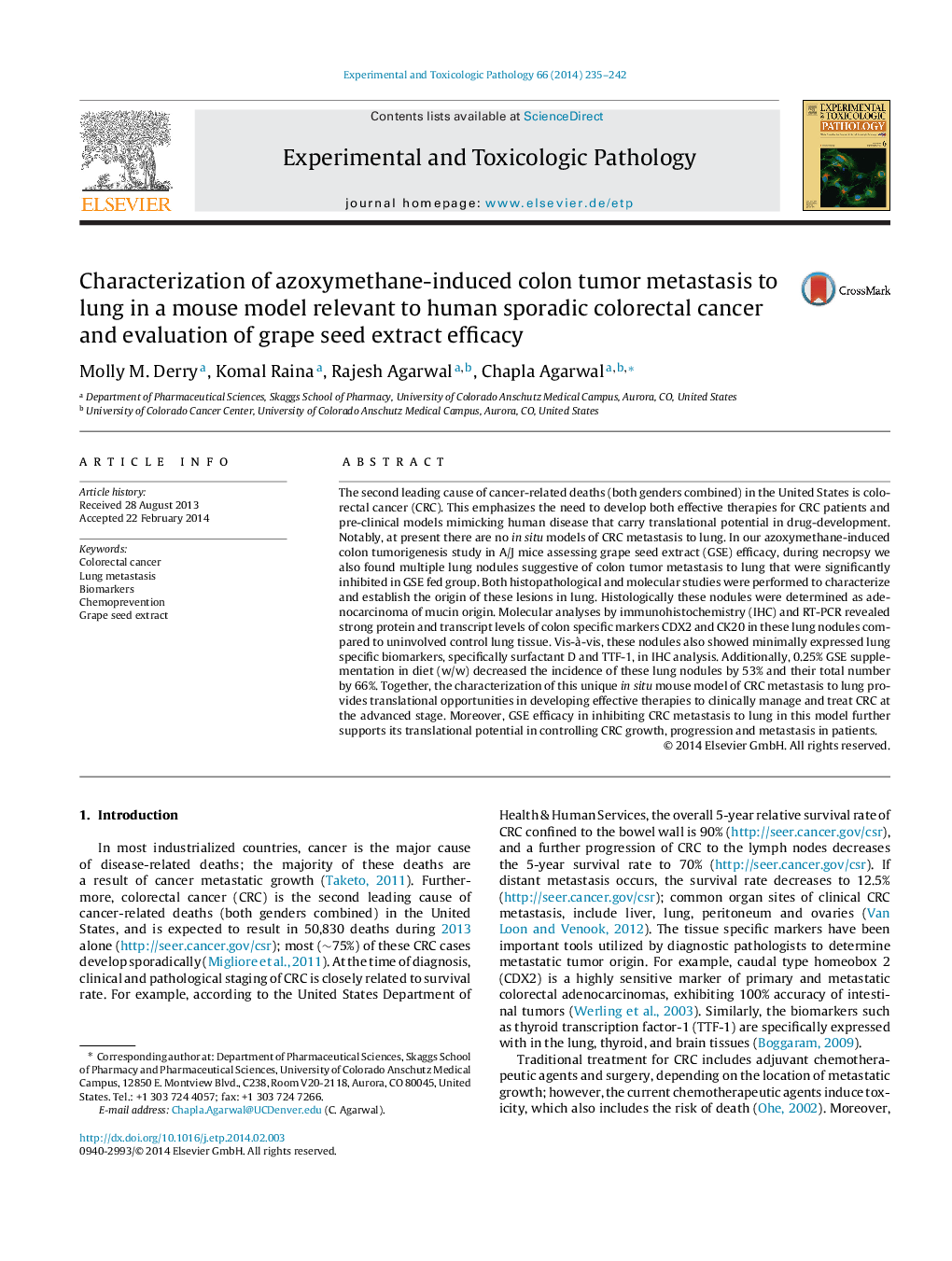| Article ID | Journal | Published Year | Pages | File Type |
|---|---|---|---|---|
| 2498830 | Experimental and Toxicologic Pathology | 2014 | 8 Pages |
The second leading cause of cancer-related deaths (both genders combined) in the United States is colorectal cancer (CRC). This emphasizes the need to develop both effective therapies for CRC patients and pre-clinical models mimicking human disease that carry translational potential in drug-development. Notably, at present there are no in situ models of CRC metastasis to lung. In our azoxymethane-induced colon tumorigenesis study in A/J mice assessing grape seed extract (GSE) efficacy, during necropsy we also found multiple lung nodules suggestive of colon tumor metastasis to lung that were significantly inhibited in GSE fed group. Both histopathological and molecular studies were performed to characterize and establish the origin of these lesions in lung. Histologically these nodules were determined as adenocarcinoma of mucin origin. Molecular analyses by immunohistochemistry (IHC) and RT-PCR revealed strong protein and transcript levels of colon specific markers CDX2 and CK20 in these lung nodules compared to uninvolved control lung tissue. Vis-à-vis, these nodules also showed minimally expressed lung specific biomarkers, specifically surfactant D and TTF-1, in IHC analysis. Additionally, 0.25% GSE supplementation in diet (w/w) decreased the incidence of these lung nodules by 53% and their total number by 66%. Together, the characterization of this unique in situ mouse model of CRC metastasis to lung provides translational opportunities in developing effective therapies to clinically manage and treat CRC at the advanced stage. Moreover, GSE efficacy in inhibiting CRC metastasis to lung in this model further supports its translational potential in controlling CRC growth, progression and metastasis in patients.
